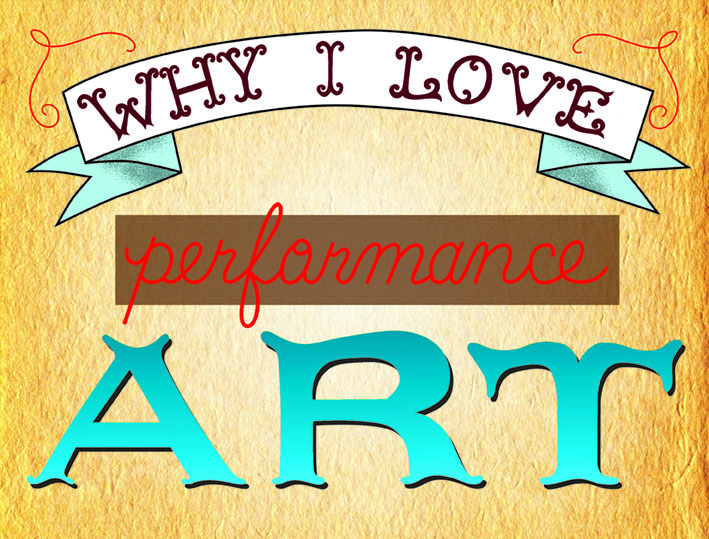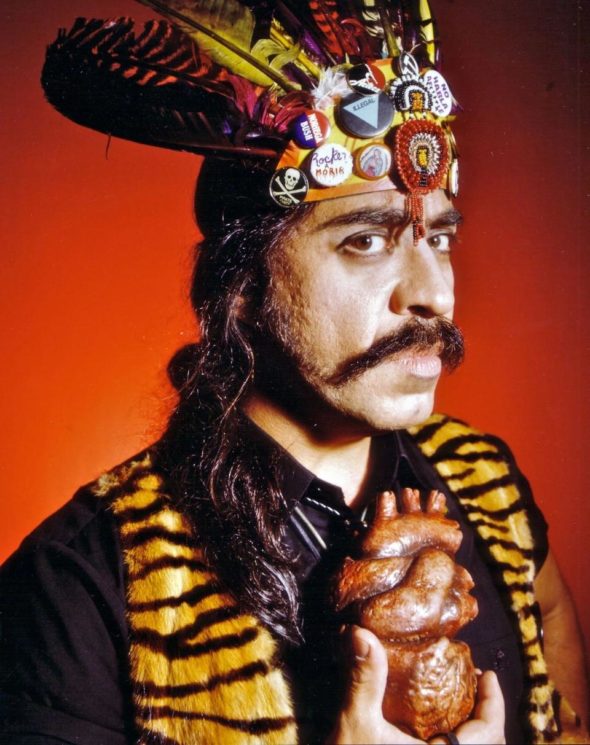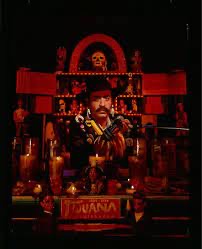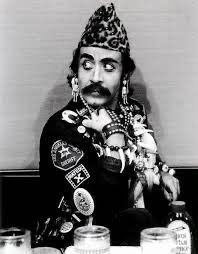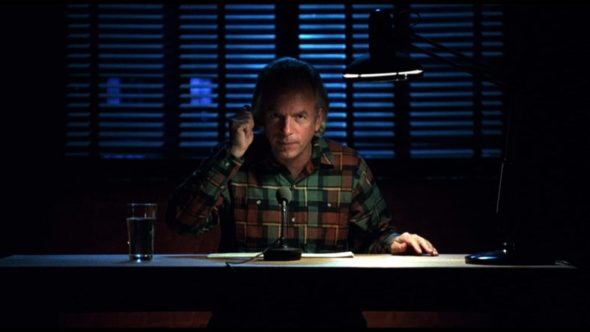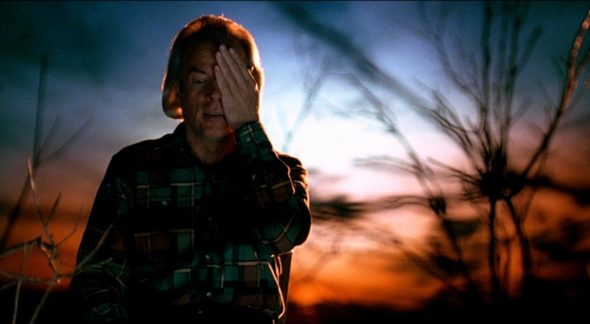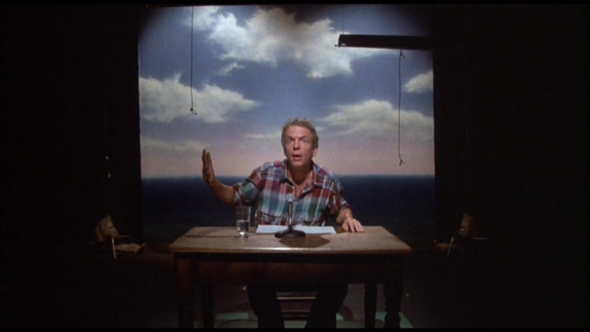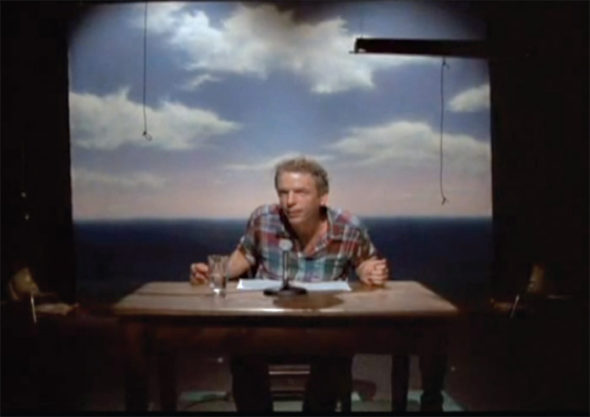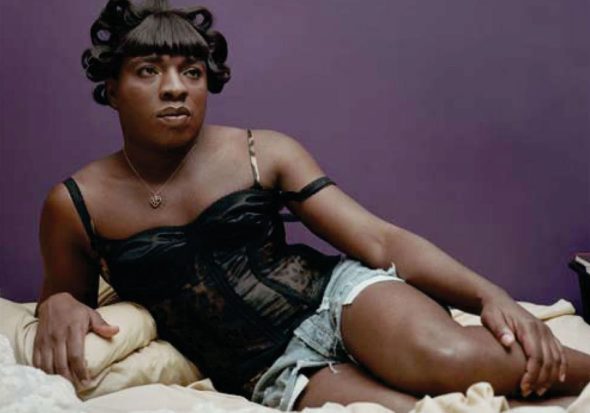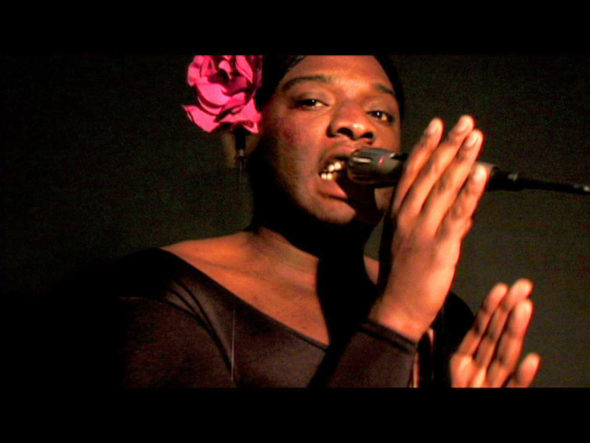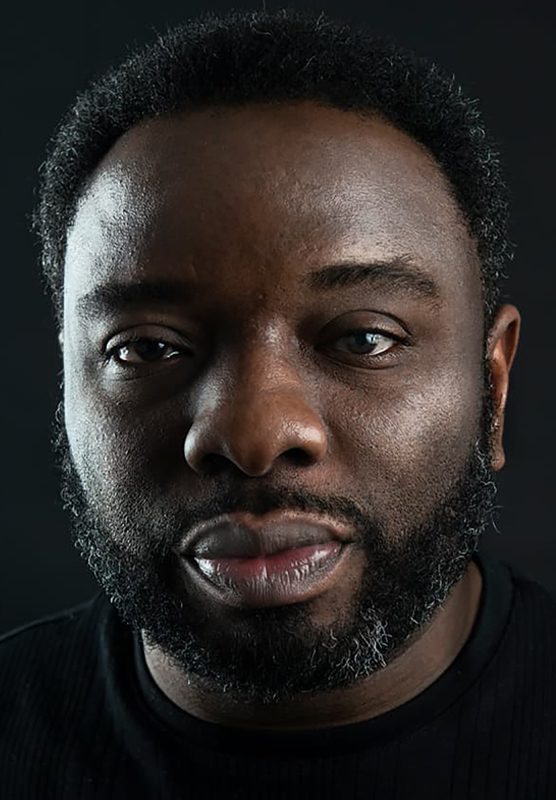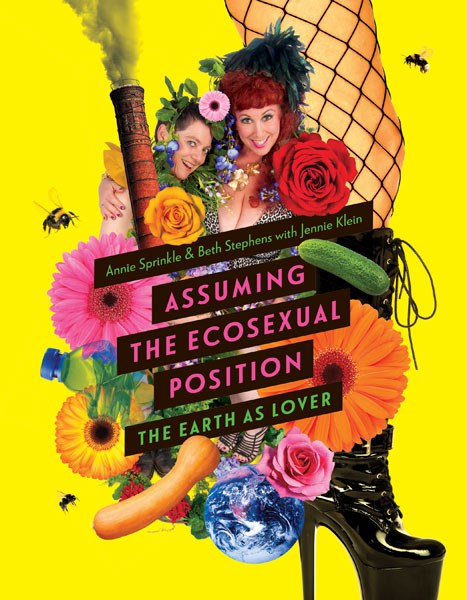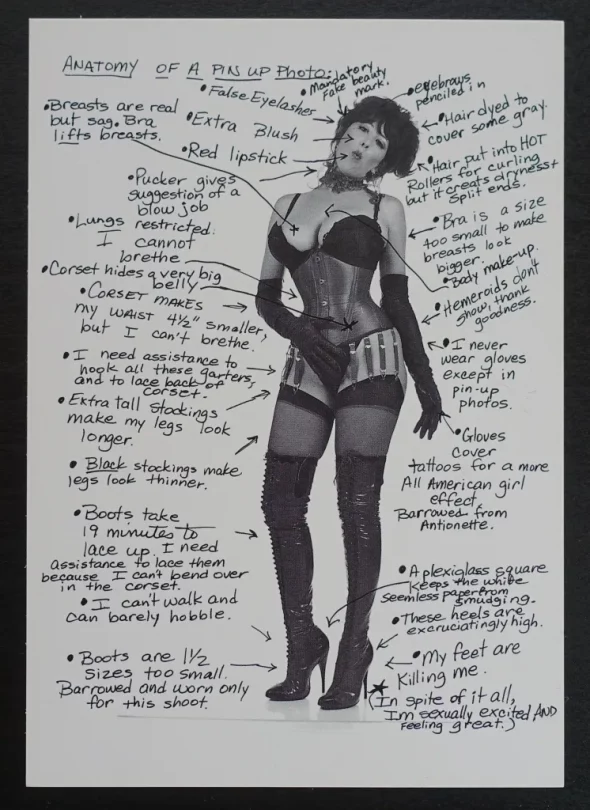This blog article first appeared on the website of:

I studied performance art in college in the early 1990’s. I was already curious. My first performance was at age 15, when I was invited to assist in a performance on Valentine’s Day. What little I remember was that there were two «nurses» and a «patient» and bags of fake blood (I held the plasma bag). At university, I tried an improve theater class, then tried out for some school productions, but hated the rejection I felt after trying out for and not getting parts, so I stopped exploring my desire to express through performance. I prefered what was happening in my improve class, or the modern dance troupe that I was in. Later I headed in a visual arts direction and started making a living as a tattoo artist. Today, I’m getting back to my roots and creating through performance. Here are some of the performance artists that I studied in school, who inspire me immensely and one that I just discovered recently, Kalup Lindy.
Guillermo Gomez Peña
The performance I love the most by Guillermo Gomez Peña is «Border Brujo», from the collection «Border Art Classicos» filmed in 1989 with a beautiful set design of a Mexican and popular culture altar by Félipe Almada. Gomez Peña, who lives in between the United States and Mexico stated that language is the border, separating us all. «I came following your dream and your dream became my nightmare», speaking to the American dream that so many Mexicans see as a means to escape their caste in life. In a «wetback» vato voice he says «I speaka Spanish, therefore you hate me, I speaka English therefore they hate me, I speaka Spanglish therefore she speaks Englino, I speak in tongues therefore you desire me». As a bi-national, he is working out a mess of internal contradiction and conflict. He navigates the performance in different voices, each a representation of stereotypes of his culture. One part is like a catholic prayer, in fake latin. He also intersperses the language of the future, using words like «cyber», «electronic», «international», «mondial», and «international network». He says «we are here to stay». He uses mystical props like burning sage, lighting candles, drinking booze from a shampoo bottle. Often the background music is a blues guitar, his sexual energy is smouldering. He talks about a certain kind of racism that is sexual exoticism, «I’m not your tourist guide across the undertermined otherness», «this ain’t no tropical safari to Palenki or Martinique or much less a private seminar on interracial relations». With a fake good old boy accent, all the while wearing a pink feather boa, he says: «No, I have no green card, I was merely hired by this gallery»… Later he plays a border control agent, with black reflective sunglasses, but, also with a red bandana tied around his head «gangster» style. In a Luchador mask, he talks about being «paralyzed by chemical nostalgia». At one point he uses a fake Hindu accent (maybe he is often mistaken as being Indian?). All of these personas tell a rich story of American race relations with Mexicans.
«El Naftazteca; Cyber-Aztec TV for 2000 A.D. pirate transmission experiment in Interactive Television live telecast» was filmed in video at iEAR studios. «CyberVato» played by longtime colabortor, Roberto Sifuentes, as the co-host and sidekick. Live chickens wander the studio set in an «interactive voodoo» seance. The phone number to call flashes on the screen and you hear telephone calls from the audience asking either insulting, racist questions or praising the audacity of the pirates. Guillermo says «let’s go back to the Golden Age of Multiculturalism», maybe he foresaw the danger of cultural appropriation, and the kind of self censoring epoque we are in now. He protests that «we are merely mythical creatures created by your cultural fears and erotic desires» and «how much Spanish language can your cultivated pysche tolerate before feeling compelled to change the channel? Let’s test your tolerance for linguistic otherness». While CyberVato translates, speaking Spanish with a thick American accent, over him El Naftazteca speaks English with a strong Mexican accent. Imagine how many people understand 0% of the discourse! They play with the drunk Mexican stereotype, a computerised voice absolves us «you are not responsible». Hypnotic special effects put the viewer in a trance, «remember your earliest trauma». Or maybe we are witnessing Guillermo’s hypnosis, as he turns into a cockroach. Gomez Peña shows old family films from the 1950’s of crazy costumed parties, explaining that he comes from a lineage of theatrical people. He refers to himself as a «hightech Aztec».
Check out the book, Exercises for Rebel Artists- Radical Performance Pedagogy, about his performance art collective: La Pocha Nostra – a laboratory of Performance Art activism that Gomez Peña created with Roberto Sifuentes.
Spalding Gray
Spalding Gray is an actor and performance artist best known for his award winning film, Swimming to Cambodia- 1987. A one hour performance, alone on a sparse stage, with sound and lighting effects, Gray tells the story of his experience acting in the film The Killing Fields. Directed by Jonathan Demme.
Gray has perfected the monologue performance. No one can imagine being riveted their seat for an hour by just one performer. That is the power of his storytelling. I find him incredibly inspiring and imagine that he inspired most of the artists I speak about in this article.
Monster in a box- is a 1 hour monologue about the 1800 page book Gray was writing about his mother’s suicide. Funny, tragic, deeply personal; Gray says «I can’t make stuff up»! He speaks about the conflicts he faces from his Christian Science upbringing vs his New York Freudian Existentialism.
Gray’s Anatomy- Gray’s storytelling style is linear, self deprecating and funny. He uses accents and is a good mimic when portraying some of the characters in his stories. The director Soderbergh, uses lighting, set design changes, and smoke to create atmosphere and transitions. Yet, it still remains just Spaulding, at a desk, with a glass of water and his notebook, telling you his story. The story of his going blind in his left eye, searching for alternatives to surgery and all the crazy adventures he accepts to go on, in search of either writing material and/or deep healing of early trauma. His life is surreal, the people he meets are surreal. His illness is a metaphor for his existential struggles. Things that happen to him are so strange, that it seems that he is recounting a dream.You can watch it on YouTube.
Spalding Gray tragically killed himself in 2004, after a car accident and skull injury that subsequently aggravated existing problems with depression.
Kalup Linzy
I just discovered Kalup Linzy recently, when I read about the Queen Rose Art House on Hyperallergic’s blog. https://hyperallergic.com/720633/kalup-linzy-bought-a-house-and-is-sharing-it-with-artists/ Linzy took his Tulsa Artist Fellowship Grant and instead of investing in a film that he said «maybe no one would see or care about», he bought a house in order to create a residency, work and performance space. He decided that helping other artists was the best way to connect and make a difference in the art world for people like himself, through hosting a safe place, and hopefully at the same time create his legacy.
Kalup Linzy is a musician and an incredibly diverse performer. He has made several «soap opera» type video series about family dysfunction and drama, struggles with acceptance, ruptures, and intervention by other family members especially the grandmother/matriarch figure. In «Conversations Wit De Churen- Da Young and Da Mess», Linzy either plays every character (each in a different voice and physicality) or if someone else is portraying a character, Linzy’s voice is lip-synced over. He is really good at playing with different dialects, using technology to change the timber, also using friends and non-actors to make DIY films that ressemble «community-access cable television». Art critics consider him to be a «gender manipulator». New York Times art critic Roberta Smith writes that he «parlays black experience into a complex form of self-consciousness». https://www.nytimes.com/2005/11/18/arts/design/where-issues-of-black-identity-meet-the-concerns-of-every.html
He explains that «the original characters—Jada, Labisha, Taiwan, and Nucuavia—all came out of my thesis. We had to look at family history, pop culture, art history, archetypes, and stereotypes.» Kalup Linzy is the writer, performer, editor, and producer of his own films. It’s just «me locking myself up in my room and just letting whatever comes to my mind come out». https://bombmagazine.org/articles/kalup-linzy-1/
Other video series-
As da Art world might turn
Ozawa and Katess
Romantic Loner- a feature length film. While at a artist residency at Headlands Center for the Arts, Linzy talks with God on a quest self love, after/during obsessions with exes. Filmed driving around the coast near the residency. An intimate journal of solitude, drinking alone (philosophizing), desperately in need for others, some touch or connection. He sings songs that tell a story of his feelings, like in «Crossing the threshold (on my soul)», he worries that we are born alone and die alone. Some parts of the film are soft porn, and the production value is slightly better (apparently he could finally afford a better camera).
Annie Sprinkle
Annie Sprinkle started out as a porn star and prostitute. She has gone through an impressive personal evolution and now holds a Phd from the Institute for Advanced Study of Human Sexuality and has created a new enviromental movement called Ecosexual.
In doing research for this article I actually watched «Spitfire» one of Annie Sprinkle’s early pornos at the National Library here in Paris. She had a small part, but she really stood out. She played a secretary dressed in an almost vintage style with a hairstyle that looked like one of the members of the B52’s. I was also able to watch Bubbles Galore, a soft core film from 1996 by director, Cynthia Roberts, where Annie plays God and every time she gets excited the humans on earth get into erotic situations. Nina Hartley stars as a female porn director in a race to direct a new film with her ex abusive lover and rival.
After her conventional porn career, Sprinkle then started exploring alternative and kinky sex movies, alienating herself a little from straight porn scene. In 1982, Sprinkle started directing her own porn films. Only after that did she decide she wanted to be an artist and started doing what she calls Art Porn. It was right around the same period as Nick Zedd’s «War is Menstration Envy», in which Sprinkle had a small part, along with other legends of the New York underground art scene. Zedd was the founder of what is known as the «theatre of transgression» for which he wrote a manifesto.
At 44 years old, Sprinkle stops shaving her body hair. She gets more and more into spirituality and creates what she calls medibation, a cross between masterbation and meditation.
In her performances, Sprinkle takes on the educational angle quite often, with a PowerPoint like presentation, or telling the story of the First F to M Transexual love story. Her «Post Porn Modernist» is a film made up of short clips from a variety of her performances, like the one she did at the Carnival of Sleaze in 1988 at The Kitchen, a New York performance art venue. Sometimes she is on stage in a bedroom decoration, inviting the audience to come up to view her cervix, direct her in a photoshoot, or she plays with humour with her boob ballet. Most performances are cute, funny and kind of sweet, except for her performance of 1000 blowjobs, doing felation on a variety of different sized and coloured dildos attached to a board, with a not so nice soundtrack of lewd un- sensitive commentaries made by men.
Annie is a woman sans complexes, breaking all kinds of taboos. «Enlightening» her audience about the sacredness of sex, love and mother nature.

